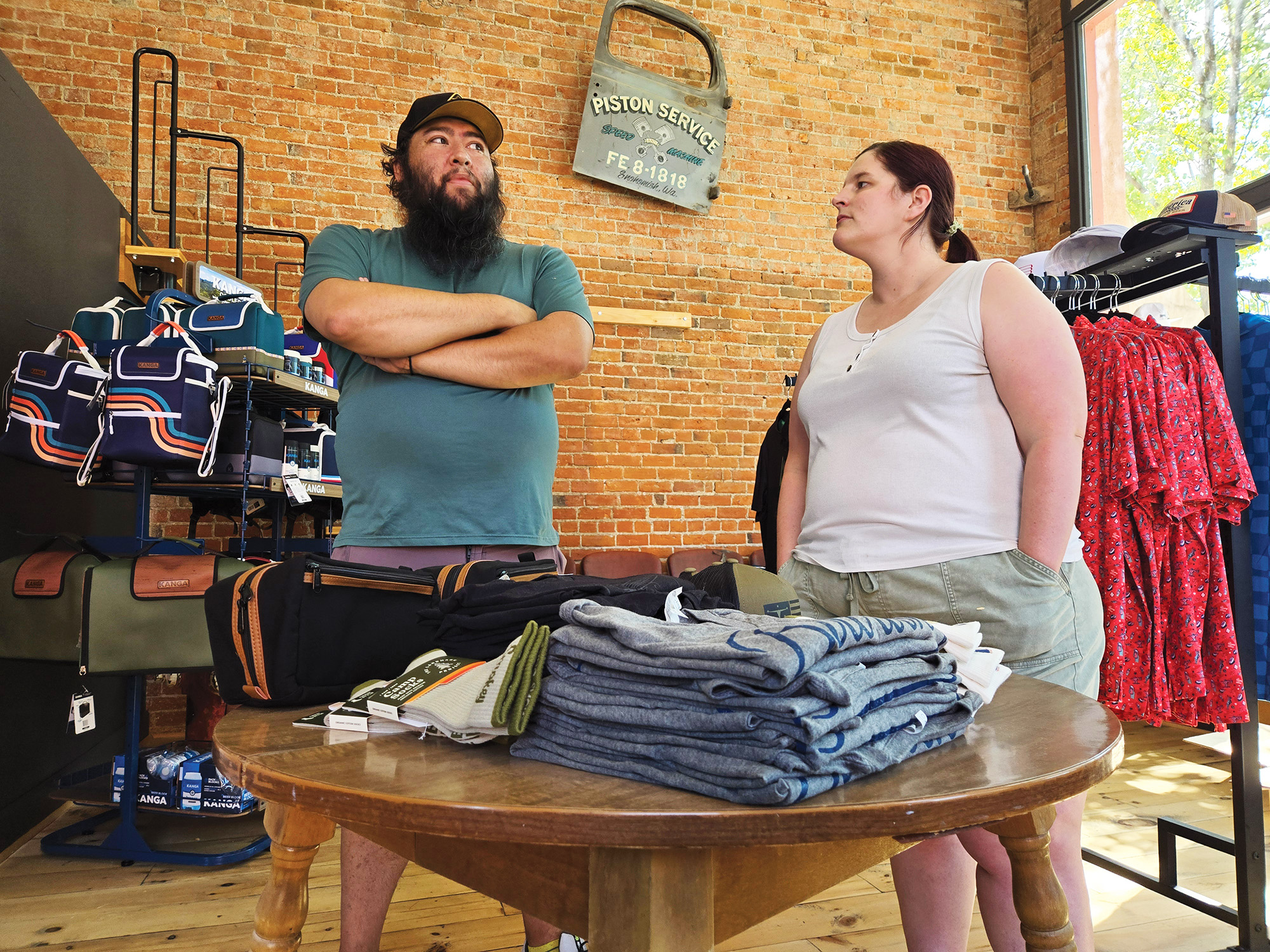COLUMN: A glimpse at Baker High School in 1926
Published 3:00 pm Friday, August 13, 2021

- Jacoby
I opened the book’s cover and almost immediately became lost in a world which no longer exists and, for me, never did.
Trending
This wasn’t a novel, though, nor any other form of fiction.
The people and the places in the book are real.
The places are in Baker City, and they persist.
Trending
But the people are, all of them, long since gone to their graves.
The book, bound in brown imitation leather, is the 1926 edition of The Nugget, the name given to the Baker High School yearbook.
(Or annual, as we mostly called these publications when I was a teenager.)
The 1926 version of The Nugget was the 28th, which puts into perspective just now venerable BHS is.
I find it endlessly fascinating to briefly inhabit a world I can never experience in person, to see the faces and read the words of people I will never know.
Fascinating, but also a bit eerie.
I ponder the reality that the students and the teachers who populate the pages of The Nugget once strolled the same streets that I do today, almost a quarter of the way through a century they could scarcely have imagined, so distant it was. For them the 19th century had far more relevance than the 21st.
I think about how these people saw the Elkhorns in the same seasonal guises that I do, how they too awoke to below-zero January mornings (except more likely in a home warmed by pine than by kilowatts or therms), and endured August heat (except without the comfort of artificially chilled air).
I understand that they did all this decades before I — or my parents, come to that — had been conceived, and when I consider this span of time, this juxtaposition of time and place, I feel a queer mixture of nostalgia and melancholy and curiosity that is not a little disconcerting.
Turning the pages of an artifact such as the 95-year-old Nugget is akin to visiting another universe, one that’s simultaneously familiar but also so different, and in noteworthy ways, that in some senses I scarcely recognize it.
The first thing I noticed about this antique is the formality of much of its language. Although the yearbook also is rich in the teenage jargon of the Roaring 20s and the inside jokes of a group of classmates in a small, rural school — an essential purpose, then as now, of this sort of document — I was surprised by the quality and sophistication of some of the writing.
The foreword, for instance, which is attributed to The Nugget staff, is the work of a period when, or so it seems to me, the proper and disciplined use of written English was rather more appreciated than it is today.
The foreword reads: “Although the memories of the past school year are still warm, and its joys, its labors, and its companionships are still fresh in mind, it is our sincere desire that when memory has been dimmed, that this 1926 Nugget Annual will prove a reminder of these happy days.”
That is a sentence written by teenagers who understood not just the foundational principles of good writing, but who also grasped such nuances as cadences which ring pleasantly in the ear.
(The eye, important organ though it is, gets too much attention, in my estimation, when it comes to reading and writing. I believe we rate the quality of writing, however subconsciously, by what we hear in our heads, not by what we see.)
Perhaps I ought not be surprised by the students’ acumen. The Nugget yearbook — I was pleased to see it referred to as an “annual” in a couple places — is not the only publication they produced. They also put out a weekly school newspaper. The staff included seven reporters and three editors, an embarrassment of journalistic riches by today’s standards.
As I leafed through The Nugget’s 98 pages I was entranced by the mixture of the contemporary and the archaic.
The first names of the students, for instance, betrayed the age of the yearbook perhaps as much as any other attribute.
There are Normas and Ethyls, Lelands and Franks, Ediths and Mildreds, Normans and Georges.
Conspicuously absent, at least to modern expectations, are Jadens and Sydneys, Kaelis and Ethans, Kadens and Makaylas, among a handful of the names to which parents are partial nowadays.
In the dozens of pictures of students there is a noteworthy prevalence of neckties and dresses. The boys have short hair, parted with the same precision that The Nugget staff assembled their paragraphs.
Some sections seem as foreign as flappers or the Charleston or the Great War.
The “13X Club,” for instance.
It has its own page, which describes the purpose of this exclusively male organization as “to develop and protect the ideals and traditions of the school. The club holds regular jury trials for all offenders of school rulings and deals out punishment according to the seriousness of the offense.”
Only one specific offense is mentioned.
“Smoking on the school ground has been practically unknown since the 13X prohibited it.”
I daresay the modern education system would find abhorrent the concept of a club that was not only segregated by gender, but also was apparently granted both judicial and punitive powers.
But at least it got the smokers under control.
Better than a dozen pages are devoted to athletics. I learned, among much else, that the 1925 Baker football team was a juggernaut, winning all eight games and not allowing a point in six of the wins. Only Pendleton and Wallowa managed to get on the scoreboard — the Buckaroos losing 15-9, and the Cougars going down 39-6.
More notably, it appears that Baker’s mascot, the Bulldog, had its origin during that stellar season. In the first game, on Oct. 3 at Halfway (this was decades before Halfway and Eagle Valley high schools were combined into Pine Eagle), Baker, and here I quote from The Nugget, “returned with two assets, a 24-0 victory and a new title, ‘Bulldogs.’ The name stuck and the team lived up to the principles of the vicious canine.”
I was pleased in no small measure to know this.
I will never again, I suspect, be able to see the Bulldog mascot, painted on a gym floor or a wall or on a jersey, and not think, at least briefly, of that impossibly distant early autumn afternoon in the Pine Valley (no night games in that less-illuminated era), when a group of boys, clad in leather helmets, became the Bulldogs.
Nor can I walk past what we today call the Central Building without seeing that little book, the 1926 Nugget. Back then that imposing building was Baker High School. Indeed it was only a decade old in 1926.
I walk that block of Washington Avenue a few times each week. Since the school district closed the building in 2009 (it was part of the Baker Middle School campus) I have occasionally thought the structure looked rather forlorn, as only a building can which one bustled with the inimitable energy of youth but which is now empty and silent.
But it feels different to me now, when I walk by.
I sense fragments of the past in the place. I imagine, instead of the occasional cracked window or the weed-dotted grass that I see today, groups of teenagers clambering up the stone steps, unencumbered by bulging nylon backpacks in eye-watering shades. I think of them, in their ties and their dresses, sitting in their wood-and-metal desks, teenagers who survived a pandemic, who don’t know that a Depression awaits, who surely would never have pondered for a moment that, almost the whole of a century in the future, someone would think their lives were compelling.
Jayson Jacoby is editor of the Baker City Herald.








